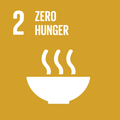This solution produces bioenergy from salt loving plants, fish from aquaculture and a coastal protection system, without freshwater, in a fully integrated energy and agriculture system.
Taking advantage of the synergies and interactions between several subsystems, the Integrated Seawater Energy and Agriculture System (ISEAS) uses non-arable desert land, irrigated with seawater, to produce bioenergy and food. The system integrates fish or shrimp aquaculture with the production of the salt-tolerant crop Salicornia and sea mangroves. Utilizing the oilseed from the Salicornia plant, liquid biofuel for aviation is produced via hydro-processing, with leftover biomass from this process as well as the mangrove production made available for bioenergy.
The benefits of the integrated system stem from the use of co-products from each process to supplement energy or material inputs for the other processes with the end result being food, biofuels and a naturally resilient ecosystem.
Why you should care
The ISEAS has the potential to provide aviation quality biofuels and other types of bioenergy with life-cycle greenhouse gas emissions less than those of conventional fossil fuel-based aviation fuels. The ISEAS offers the additional benefits of using seawater, not freshwater, while making productive use of marginal land.
How the Global Goals are addressed

Zero Hunger
Aquaculture is the first stage of the ISEAS concept, producing fish in a more sustainable way than wild fish harvesting, ensuring a more durable source of nutrition.

Climate Action
A Salicornia-based aviation biofuel could result in a 100% reduction in life-cycle greenhouse gas emissions emissions compared with traditional jet fuel.

Life Below Water
Fish farms can help to take the pressure off wild fish stocks, encouraging biodiversity and protecting vulnerable ecosystems from dangerous fishing practices like bottom trawling.


